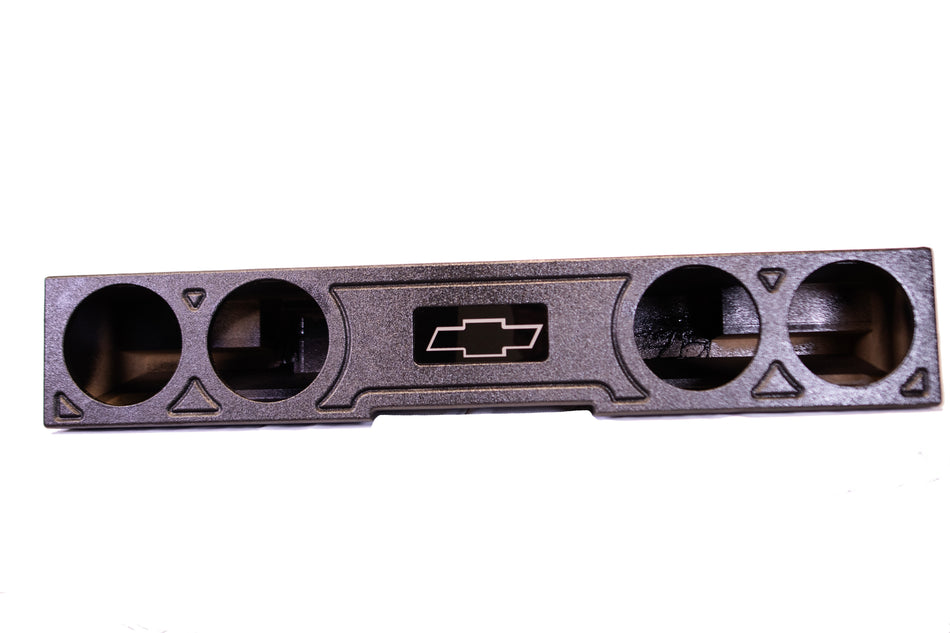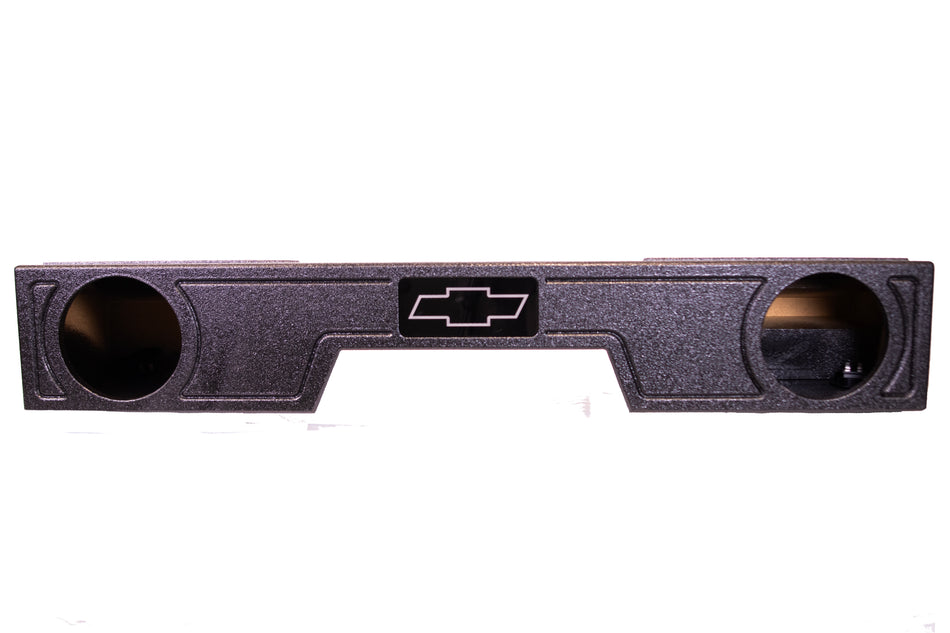Your decision about subwoofer enclosure type will play the most crucial role in reaching the perfect low-end rumble within your car audio system. Most people debate between sealed subwoofer boxes and those with ported openings. The enclosure technologies produce powerful bass sounds through separate mechanisms although they function uniquely from one another.
It’s not all about volume or preferences; there are good reasons to choose between a sealed vs ported box. Idea is to understand how each design affects the sound behavior, the music genres it’s suited for and how it fits with your vehicle’s acoustics.
Basics of Subwoofer Enclosures
Thus, before going into details of a subwoofer enclosure, it is necessary to understand what it does.
Air passing through and around the speaker is controlled by a subwoofer box. This directly affects:
-
Bass output (SPL – Sound Pressure Level)
-
Frequency response
-
Resonance control
-
Speaker longevity
Audio enclosures have multiple types such as bandpass and transmission line but car audio applications most commonly use two enclosure types.
-
Sealed (acoustic suspension)
-
Ported (bass reflex)
Each type has unique features, and the right one depends on what kind of bass experience you're looking for.
What is a Sealed Subwoofer Box?
Sealed enclosure is an airtight box that traps air inside, creating tight resistance against the subwoofer’s cone as it moves.
Key Features:
-
Tight, accurate bass
-
Smooth, controlled roll-off at lower frequencies
-
Requires more power for the same volume as a ported box
Advantages:
-
Ideal for genres that rely on precision: rock, jazz, acoustic, classical
-
Smaller footprint—easier to fit in compact trunks
-
Lower distortion due to reduced cone excursion
Drawbacks:
-
Lower overall SPL (volume) than ported boxes
-
Needs a stronger amp to push the same bass level
-
Less efficient at producing ultra-low frequencies
Best For:
Listeners who value tight, punchy, accurate bass and clean transitions between notes—often described as “musical” or “controlled.”
What is a Ported Subwoofer Box?
A ported enclosure includes a vent or slot (the port) that allows air to move in and out. This port reinforces the bass output by using resonance and airflow tuning to amplify low frequencies.
Key Features:
-
Louder bass with less power input
-
More efficient at low frequencies (around 30–50 Hz)
-
Tunable via port size and length
Advantages:
-
Great for hip-hop, EDM, trap, pop, and reggae
-
Delivers deeper, boomier bass
-
Can be custom-tuned for different frequencies
Drawbacks:
-
Larger enclosure size required
-
Less accurate transient response compared to sealed
-
Poorly tuned ports can cause distortion or “boomy” bass
Best For:
Bass lovers who want maximum SPL, especially at lower frequencies, and are willing to give up some clarity for impact and rumble.
Sealed vs Ported Box: Side-by-Side Comparison
|
Feature |
Sealed Enclosure |
Ported Enclosure |
|---|---|---|
|
Bass Type |
Tight, controlled |
Deep, boomy |
|
Power Requirements |
Higher |
Lower (more efficient) |
|
Frequency Response |
Smooth, accurate |
Emphasized low-end |
|
Size Requirement |
Compact |
Larger |
|
Music Style Compatibility |
Rock, jazz, acoustic, classical |
Hip-hop, EDM, bass-heavy music |
|
Tuning Complexity |
Easy – no tuning needed |
Requires careful port tuning |
|
Speaker Protection |
Better cone control |
Higher excursion risk if mistuned |
|
SPL (Loudness) |
Moderate |
High |
Listening Experience: Which One Feels Better?
Sealed Enclosure Feel:
Every kick drum is tight, bass guitar is precise, then rhythm feels natural. At low volume, the notes are full without overwhelming the rest of the system, and they feel detailed even at the lowest volume.
Ported Enclosure Feel:
When you listen to deep bass tones you detect the vibrations primarily in your torso. The subwoofer consumes air evenly without strain and creates a big sound output. The speaker produces impressive bass when you attend vehicle displays and tracks with strong bass sounds but it tends to distort other recordings without correct settings
Science Behind the Sound!
Sealed Boxes:
Because the air inside the enclosure is trapped, it acts like a spring to hold the motion of the subwoofer cone in place. It diminishes excessive movement, this helps deliver accurate and fast reacting bass with no phase problems.
Ported Boxes:
It is tuned to a certain frequency range where the resonated air within the box enhances output. Because of this added resonance, the sub is more efficient in that frequency band but it also creates group delay which can also affect timing accuracy.
Choosing Based on Your Music Taste
|
Music Style |
Best Enclosure Type |
Why |
|---|---|---|
|
Rock/Alternative |
Sealed |
Tight bass that complements guitars |
|
Jazz/Classical |
Sealed |
Natural, balanced sound reproduction |
|
EDM/Trap/Pop |
Ported |
Emphasized sub-bass for drops and beats |
|
Hip-Hop/Reggae |
Ported |
Deep, heavy hits that resonate |
|
Mixed Listening |
Depends on setup |
Consider dual setups or hybrid tuning |
Matching Subwoofer to the Enclosure
Make sure your selected subwoofer matches the enclosure type you want since design factors differ between enclosures. Some subwoofers come pre-built for enclosed use yet other designs achieve optimal results when placed inside enclosures.
Look for:
-
Manufacturer recommendations on box volume and tuning
-
TS parameters like Qts, Vas, and Fs, which determine enclosure compatibility
-
Proper airspace volume: sealed boxes are less forgiving if undersized
A poorly matched sub and enclosure can result in distortion, reduced lifespan, and disappointing bass, no matter how much power you throw at it.
Ported Box Tuning: What Does It Mean?
Port tuning involves setting the resonant frequency of the enclosure to align with the type of bass you want. For example:
-
A port tuned to 32 Hz gives deep, smooth bass
-
Tuning closer to 40–45 Hz delivers punchier, louder bass but less low-end depth
Get this wrong, and your subwoofer might sound boomy or hollow, or worse—damage itself from over-excursion.
Hybrid or Custom Options
If you want the best of both worlds, you could explore:
-
Passive radiator enclosures (similar to ported but without the turbulence)
-
Bandpass boxes (tuned for specific frequency ranges, often louder but less accurate)
-
DSP-tuned sealed enclosures with EQ correction for better depth
These are more advanced setups and usually best handled by professional installers or seasoned enthusiasts.
Final Opinions: Which Should You Choose?
It all boils down to your listening priorities:
-
Choose sealed if you want clean, tight, controlled bass and don't mind sacrificing a few decibels for precision.
-
Choose ported if you want to maximize output and low-end rumble, especially for bass-heavy music genres.
For some car audio fans, an ideal answer may even be a custom made system that combines both of those qualities, or one set up for particular occasions.
Quick Recap:
|
Want This |
Choose This Box |
|---|---|
|
Clean, detailed bass |
Sealed |
|
Loud, chest-thumping bass |
Ported |
|
Smaller enclosure |
Sealed |
|
Deep bass with less power |
Ported |
|
Mixed genre music |
Either, depending on preference |









